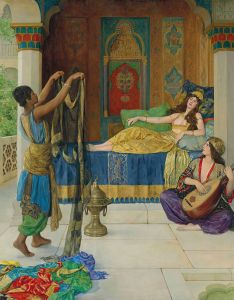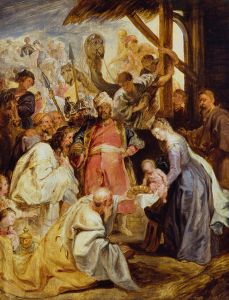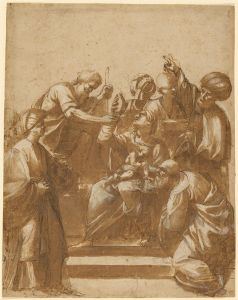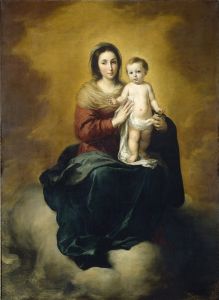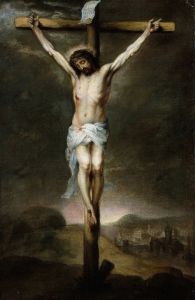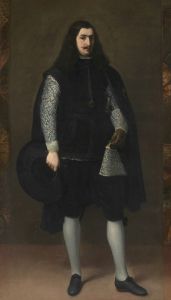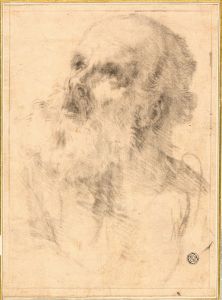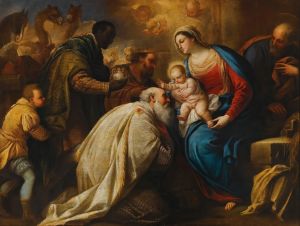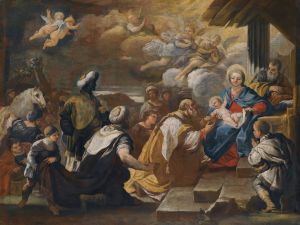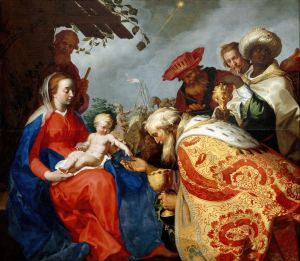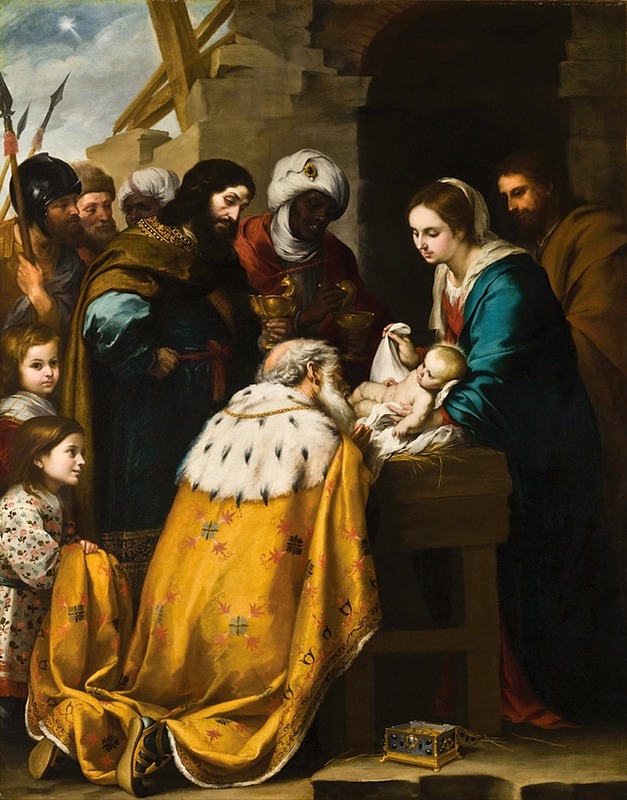
Adoration Of The Magi
A hand-painted replica of Bartolomé Estebán Murillo’s masterpiece Adoration Of The Magi, meticulously crafted by professional artists to capture the true essence of the original. Each piece is created with museum-quality canvas and rare mineral pigments, carefully painted by experienced artists with delicate brushstrokes and rich, layered colors to perfectly recreate the texture of the original artwork. Unlike machine-printed reproductions, this hand-painted version brings the painting to life, infused with the artist’s emotions and skill in every stroke. Whether for personal collection or home decoration, it instantly elevates the artistic atmosphere of any space.
Bartolomé Esteban Murillo's Adoration of the Magi is a notable painting by the renowned Spanish Baroque artist, who is celebrated for his religious compositions, genre scenes, and portraits. This artwork depicts the biblical episode of the Magi presenting gifts to the infant Jesus, a theme that was popular in Christian art during the Baroque period. Murillo's interpretation of the scene reflects his characteristic style, marked by soft, luminous colors, delicate brushwork, and an emphasis on emotional expression.
The painting portrays the Virgin Mary holding the Christ Child, who is the central focus of the composition. The Magi, traditionally represented as three wise men or kings, are shown kneeling or standing in reverence as they present their gifts of gold, frankincense, and myrrh. Murillo’s depiction emphasizes the humanity and humility of the figures, a hallmark of his approach to religious subjects. The expressions and gestures of the Magi convey awe and devotion, while the tender interaction between Mary and the infant Jesus highlights the theme of maternal love.
Murillo’s use of light is a defining feature of the painting. The figures are bathed in a soft, warm glow that draws attention to the holy family, creating a sense of divine presence. The composition is carefully balanced, with the figures arranged in a harmonious manner that guides the viewer's eye toward the central scene. The artist’s skillful use of chiaroscuro enhances the three-dimensionality of the figures and adds depth to the overall composition.
While the exact date of the painting is not definitively known, it is believed to have been created during the height of Murillo's career in the mid-17th century. This period was marked by his increasing focus on religious themes, which were highly sought after by patrons in Seville, where he spent most of his life. Murillo’s works were often commissioned for churches, monasteries, and private collections, reflecting the deeply religious culture of Spain during the Counter-Reformation.
Adoration of the Magi exemplifies Murillo’s ability to combine technical mastery with emotional resonance, making his religious paintings accessible and moving to viewers. His work had a significant influence on Spanish art and was admired for its ability to convey spiritual themes with warmth and humanity.
The painting is housed in the Museo del Prado in Madrid, Spain, which holds one of the most extensive collections of Murillo’s works. The museum provides an opportunity for visitors to appreciate the artist’s contribution to Baroque art and his enduring legacy in the history of Western painting.





